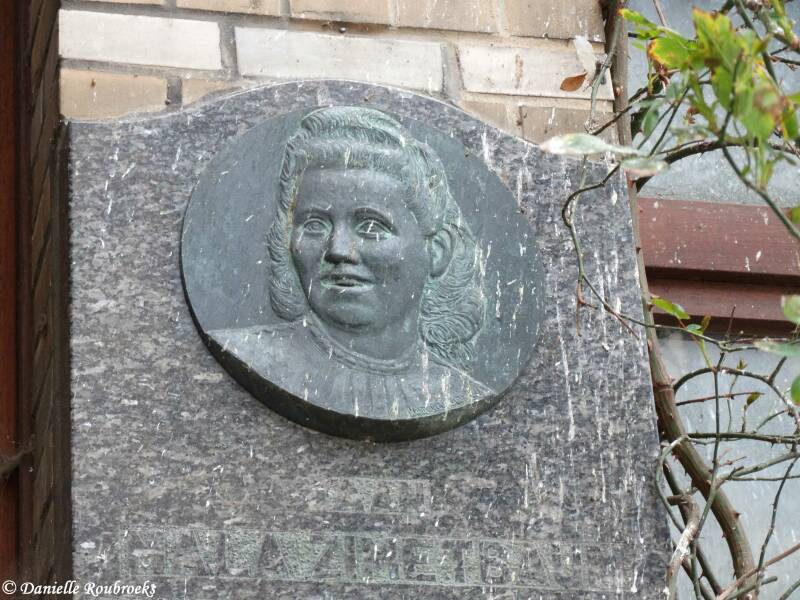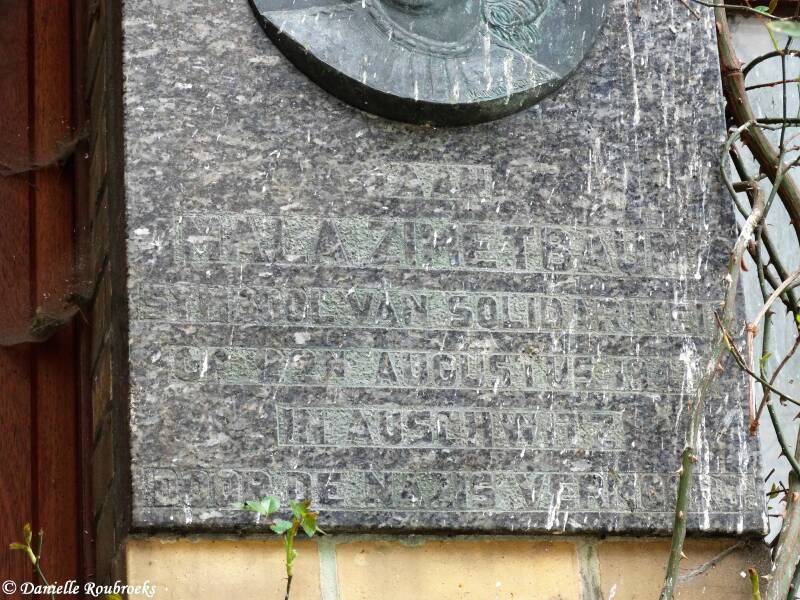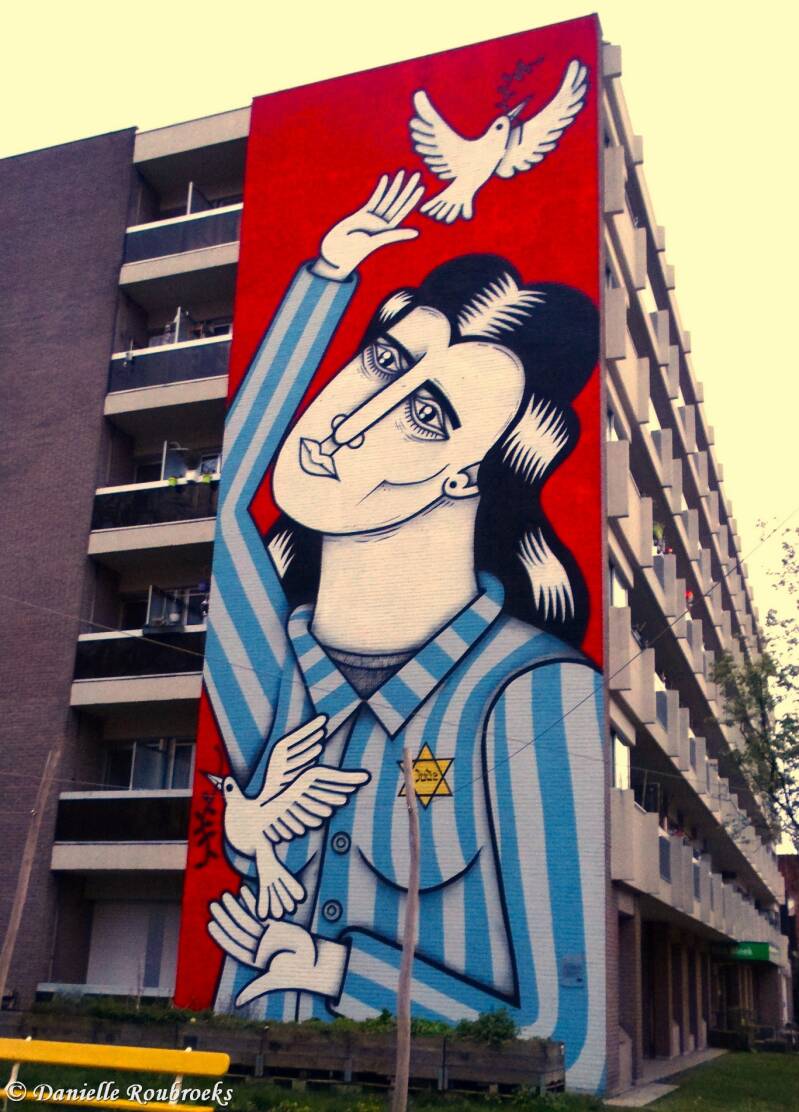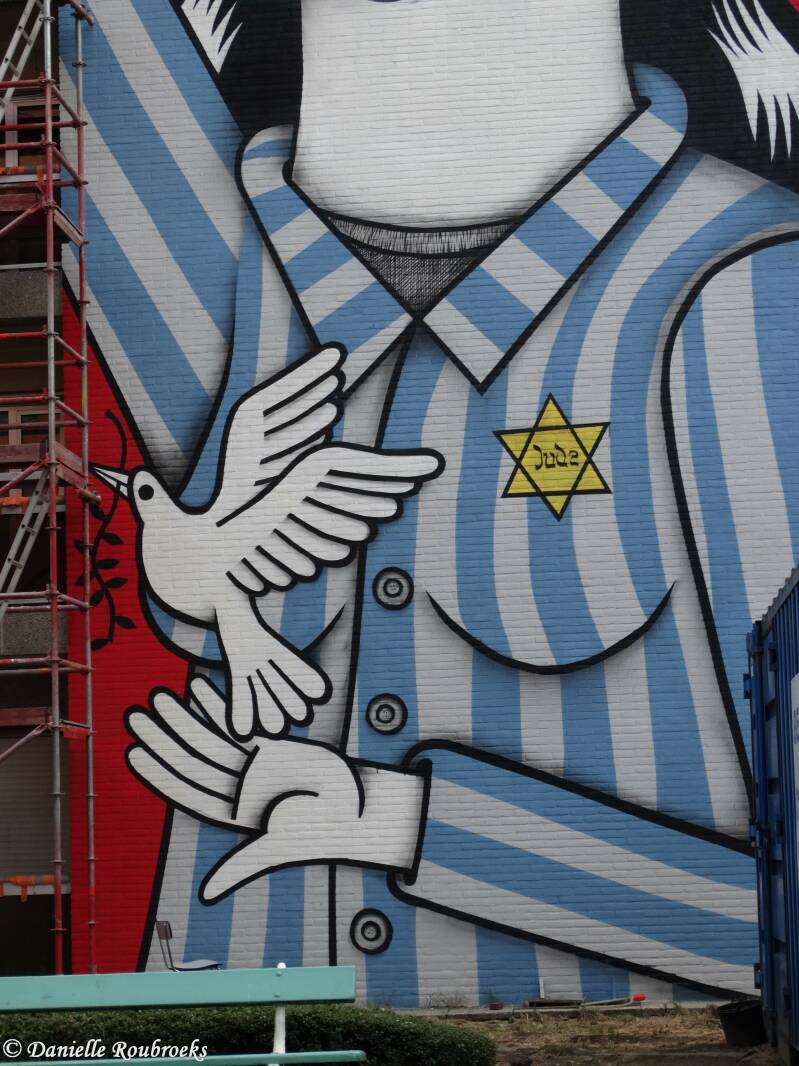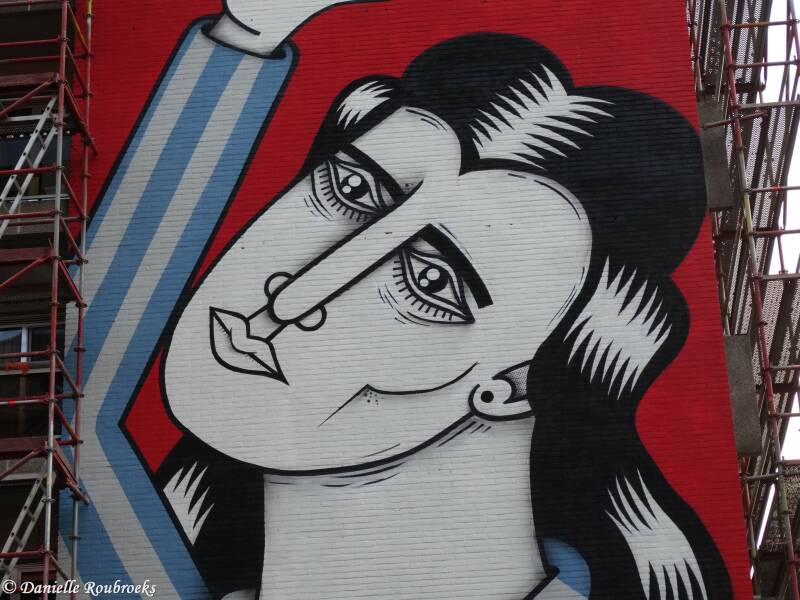Borgerhout Memorial
Historical Information (Source: Wikipedia)
Mala Zimetbaum (Brzesko, 26 January 1918 - Auschwitz, 15 September 1944) was an Antwerp Jew of Polish origin. She was arrested in July 1942 and deported to Auschwitz-Birkenau in September that year.
Malka Zimetbaum, better known as "Mala la Belge", escapes from Auschwitz but is arrested again and executed in front of other prisoners.
Malka Zimetbaum is a young Jewish woman of Polish origin who lives in Antwerp. Her father, Pinkas Zimetbaum and her brother Salomon moved to Borgerhout in 1926. Chaja Schmelzer, mother of the family, joined them two years later with Malka who was 10 years old at the time. Pinkas works as a salesman and is blind, Chaja does the housework. It is mainly Malka and Salomon who take care of their parents. Both work in the diamond sector. Malka also sometimes works as a seamstress.
After the German invasion, the Zimetbaum family undergoes anti-Jewish measures imposed by the occupying forces. Proof of this is Malka's entry in the Jewish register. Her family can also register. In July 1941 they have a “Jew-Juif” stamp on their identity cards, which is indicated by a red cross in the margin. From June 1942 they wear the obligatory Star of David, indicated on their registration by the purple stamp in the shape of a star.
Malka is stopped on July 22, 1942 when she travels from Antwerp to Brussels. The first Jewish round-up in Antwerp was organized by the SS'er Erich Holm, head of the local anti-Jewish unit together with some Feldgendarmes. The same day the family leaves Antwerp and moves to Brussels. Malka spends 5 days in Breendonk before being transferred to the Dossin barracks, which opens on that day. Together with other women who were arrested during that round-up, she is involved in the administration of the collection camp.
On July 27, the day of the opening of the camp in Mechelen, the Association of Belgian Jews forwarded a letter to the Sipo-SD of Antwerp to request the release of Malka. But to no avail. On September 14, 1942, Malka Zimetbaum, 24 years old at the time, was entered on the list of Transport X. The next day she was deported to Auschwitz-Birkenau. Once there, the SS of the camp select her to work as a translator and courier between the Auschwitz men's camp and the women's camp in Birkenau. For this she is assigned the administrative number 19 880. This is the beginning of the legend of "Mala la Belge" - a heroic woman in a brutal world.
Malka uses her privileged position to help countless fellow inmates and has managed to save several from a short trip to the gas chambers. Despite the high risks of being caught, she passes on food and messages to fellow prisoners.
In the camp, Malka starts a relationship with a Polish political prisoner, Edward Galiński, also called Edek. Edward Galiński (1923 - 1944), and of Jewish origin, was born on May 10, 1923 in Wieckowice, Poland. Edek worked for the Polish army and fought against the Nazis. He was arrested and deported to Auschwitz on June 14, 1940 with 728 other political prisoners. He was registered under number 531. Edek and Malka can escape from the camp on June 24, 1944, but are arrested on July 6 in Bielsko, near the Czechoslovak border. The next day they are returned to Auschwitz. Back in Auschwitz, the two are locked up in Block 11. They are interrogated and tortured for a long time before being hung. Their execution takes place on September 15, 1944 at the apple site of Birkenau, in front of the other prisoners. Their execution serves as a dissuasion to others who have plans to try to escape.
Mala la Belge becomes a symbol of resistance. There are several versions about her death: she would have cut open her veins and / or hit an SS with a bloodied hand; she would "long live Poland!" have shouted. The reality may be far less heroic: after all the hardship and abuse, she was barely able to stand upright and was taken to the gallows in a wheelbarrow.
Malka Zimetbaum is one of 1022 deportees on Transport X who were murdered. Only 25 of this group survived the deportation.
Various films and books about her were released after the war.
Marinisstraat 7, Borgerhout - Memorial at the house for Mala Zimetbaum.
Street artist Joachim Lambrechts painted her mural in the Montensstraat, Borgerhout.





